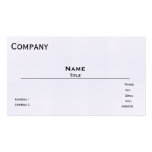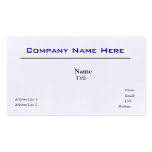Selling on more than one online channel can open up to retailers a whole new world of opportunities. Amazon, eBay (and the international versions of these marketplaces), and your own personal Web store, usually created with a provider like Shopify, Magento, or WooCommerce, is the most common combination retailers use. But there are loads of other niche marketplaces out there too, like Etsy for homemade crafts and vintage knick-knacks, and Yumbles for artisan foods.
There are plenty of benefits when it comes to selling on more than one channel:
• The main motivator for a retailer adopting any kind of strategy is always going to be increasing profit, usually by increasing sales. Selling on multiple channels offers a variety of different engagement points for customers to make purchases, and increases the convenience of sales, boosting profit as a result.
• Being listed on more than one channel is great for SEO and helps customers find retailers better. It’s also great for reaching a wider audience – someone who’s your target customer who shops on Etsy for example might not think of looking on Amazon, so listing on Etsy could bring in those customers you’re missing out on.
• Amazon and eBay do a lot of the legwork for you by drawing in customers, while you can still use your own website to work on branding and personality.
Managing inventory is always going to be a chore and a struggle as a retailer, but as soon as you expand from one channel to many, you’re going to find it’s even more difficult. Luckily, there are options out there for retailers who are selling on more than one sales channel and are slowly feeling the burn. One such way is the use of an inventory management software that syncs sales across those multiple sales channels.
Syncing your inventory across sales channels helps you:
• Save time that you would usually spend updating stock and inventory numbers
• Save time on manually inputting data into your accounting software
• Avoid human error that occurs from inputting data manually
• Avoid accidentally selling products that you don’t have in stock (overselling).
• View your stock and inventory data in real-time.
Problem:
Keeping inventory levels up-to-date can be a particularly overwhelming task for retailers. Having too many items out of out of stock, showing incorrect stock levels, and selling outdated or expired items on a retail website can negatively affect your business and often results in a loss of customers and damage to your reputation.
Solution:
With inventory management software that syncs stock across multiple channels, retailers get real-time insights into all the quickest moving stock and the slow moving products on each online store so that they can make the correct adjustments and keep their stock levels optimal and their costs down. You will no longer need to have multiple softwares to help you fulfill your customers’ orders and expectations. Multi-channel software allows you to receive goods into your store electronically and avoid selling more products than you have in stock.
Problem:
A multi-channel retailer’s aims are to deliver the correct goods at the right time, to the right location, in the correct amount and in the right quality. Of course this means their orders have to be attributed to the correct warehouse and then fulfilled in a manner that is efficient and time conscious. Also, each order will involve multiple steps managed by different teams across various stations throughout their warehouses, so there’s a lot of opportunity for human error.
Solution:
This is where a warehouse management system comes in handy and enhances the multi-channel solution. It gives retailers sophisticated functionality and multiple sales options to reduce their warehouse operations and their fulfillment costs, manage orders across their multiple warehouse locations as well as dropshipping partners and store locations, streamlines management of products and inventory, helping them improve their delivery times.
Problem:
In most companies, stock is the greatest asset on the balance sheet, which means that planning, forecasting, and managing inventory will determine how profitable you’ll be. Inaccurate forecasting produces backorders, which can result in unsatisfied customers – and can also turn away potential new ones. Keeping this kind of data accurate is hard enough for retailers selling on just one channel, and it gets more and more difficult for those who are using more than one channel.
Solution:
Most multi-channel softwares (the good ones, anyway) will have a reporting tool that works out sales reports and forecasting for you, saving you time and making your life a lot easier. This also eliminates the need for you to combine data from separate systems because it’s all one place.
Selling across multiple channels can massively benefit retailers by creating more sales opportunities and resulting in an increase in profits. It sounds complicated, but it really is worth the effort, and with the software available today, retailers can breeze through their inventory management whether they’re selling on one channel or ten.







No comments:
Post a Comment